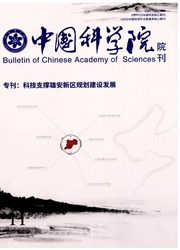

 中文摘要:
中文摘要:
【摘要】细胞是生物体最基本的结构和功能单元,它蕴含了大自然几千万年进化所沉淀的智能。细胞外膜将细胞内部和细胞环境分割开,控制细胞内外物质的进出,而细胞内膜将细胞内部分成具有不同生物功能的细胞器,这使得细胞自身构成了一个分布式并行信息处理系统。文章介绍了研究细胞计算的背景,细胞的基本结构和功能,以及基于细胞的结构和功能而发展起来的计算机科学新领域:膜计算。膜计算目前主要有3类计算模型:细胞型计算模型、组织型计算模型和神经型计算模型,这3类计算模型分别以单个细胞、细胞群体和神经元作为计算载体。膜计算在生物系统建模等方面具有重要的应用价值。随着生物技术的发展,人们用大肠杆菌等实现了部分膜计算模型。最后,展望了膜计算在生物学、医学、大规模数据存储、大规模并行计算等方面的应用前景。
 英文摘要:
英文摘要:
Cells are known as the basic structural and functioning units of living organisms, which preserve rich sources of in- telligent of nature. The external membrane of a cell separates the interior of the cell from the outside environment, controlling the movement of substances in and out of the cell, while the internal membranes separate the cell into several functioning or- ganisms that are associated with specific biological functions. In this way, cells can be understood as distributed parallel infor- marion processing devices. In this paper, we introduce cell-based computing, including the background, the basic structure and function of cells, and the state-of-the-art in cell-based computing. The field of cell-based computing is also called membrane computing. There are three main classes of computing models in this field: cell-like membrane computing model, tissue-like membrane computing model, and neuron-like membrane computing model. Membrane computing shows valuable applica- tions in modeling biological systems, etc. With the development of biological technology, membrane computing models are implemented in Escherichia coli, etc., though the size is limited. We discuss the future of membrane computing including the potential applications in biology and medicine. Especially, we point out that membrane computing has potential advantages in the store of big data and massively parallel computing
 同期刊论文项目
同期刊论文项目
 同项目期刊论文
同项目期刊论文
 期刊信息
期刊信息
